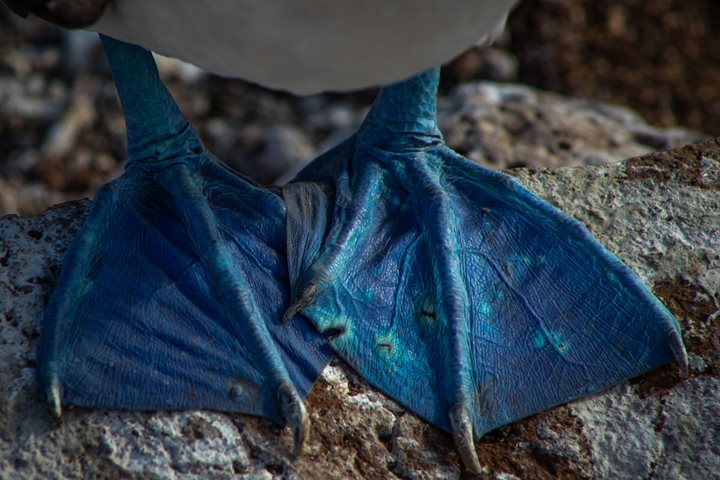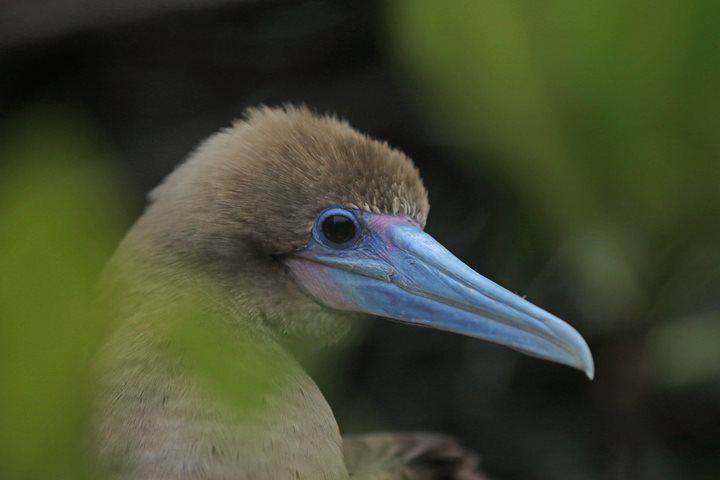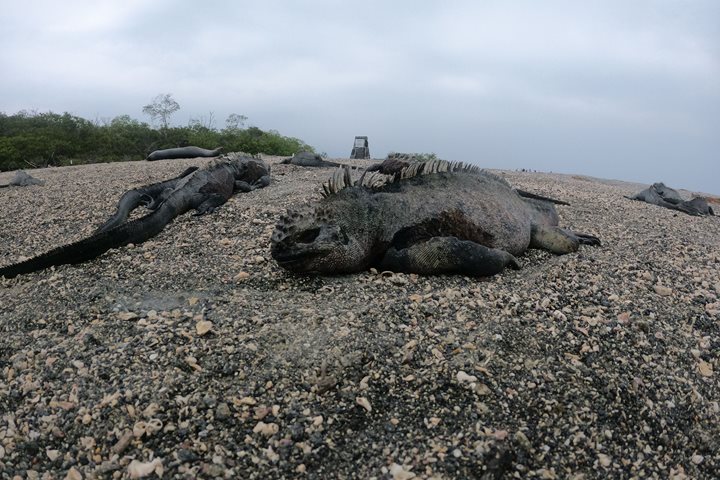This morning we started our day in the northwestern part of the Galápagos, surrounded by huge, young shield volcanoes. The western part of the archipelago is known for nutrient-rich waters that attract different species of marine organisms, including marine mammals such as dolphins and whales. Early in the morning we spotted two big pods of common dolphins on our way to Punta Vicente Roca.
After breakfast, we were already near Ecuador Volcano, a spectacular shield volcano, which is crossed by the Equatorial line, and has collapsed into the ocean leaving fascinating views of the inner caldera wall and the caldera floor. The ship dropped anchor at the southern end of the caldera, in an area called Punta Vicente Roca, where we took a Zodiac ride along the coast of Isabela Island, looking for penguins, cormorants, sea turtles, marine iguanas, and sea birds. Later on, we went back to the ship to get ready for our deep water snorkel in the same area. We were swimming with turtles, penguins and the always curious flightless cormorants.
During lunch time, we sailed southwest heading to Fernandina Island, the youngest island of the archipelago, one of the most active volcanoes in the world and the world's largest most pristine island.
After landing at Punta Espinosa, we started our hike on a very young lava rock field, only a couple of hundred years old. This pristine place is inhabited by thousands of marine iguanas that were sun basking on the dark lava, while sea lions, penguins, flightless cormorants, herons, lava lizards, and Galapagos hawks coexist in this challenging and always fragile ecosystem. It’s the “land of the fittest,” as Darwin describes this place on the planet.

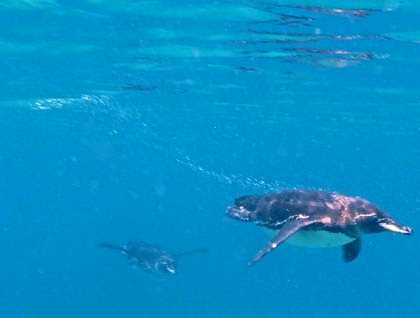

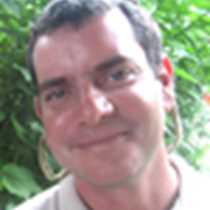

.jpg?width=106&height=85&mode=crop&scale=both&quality=50)

